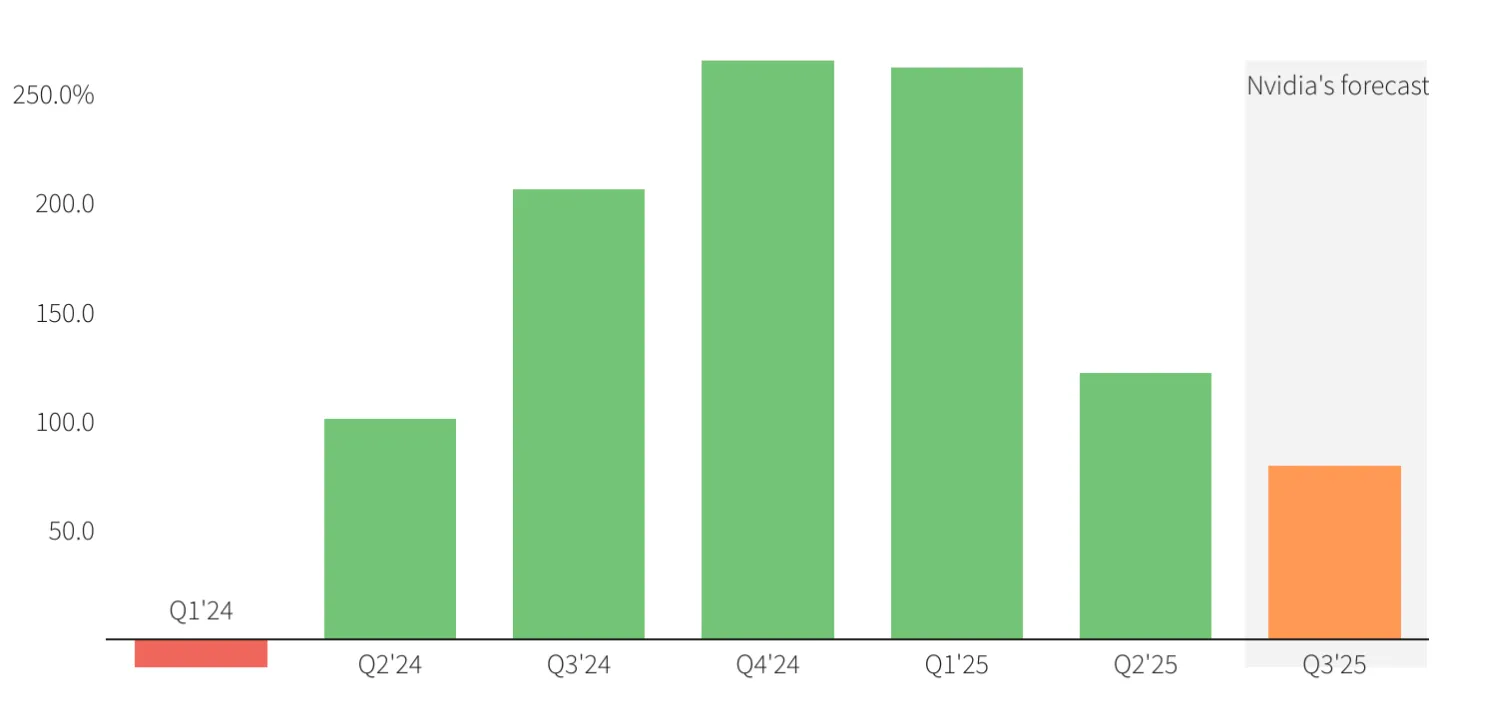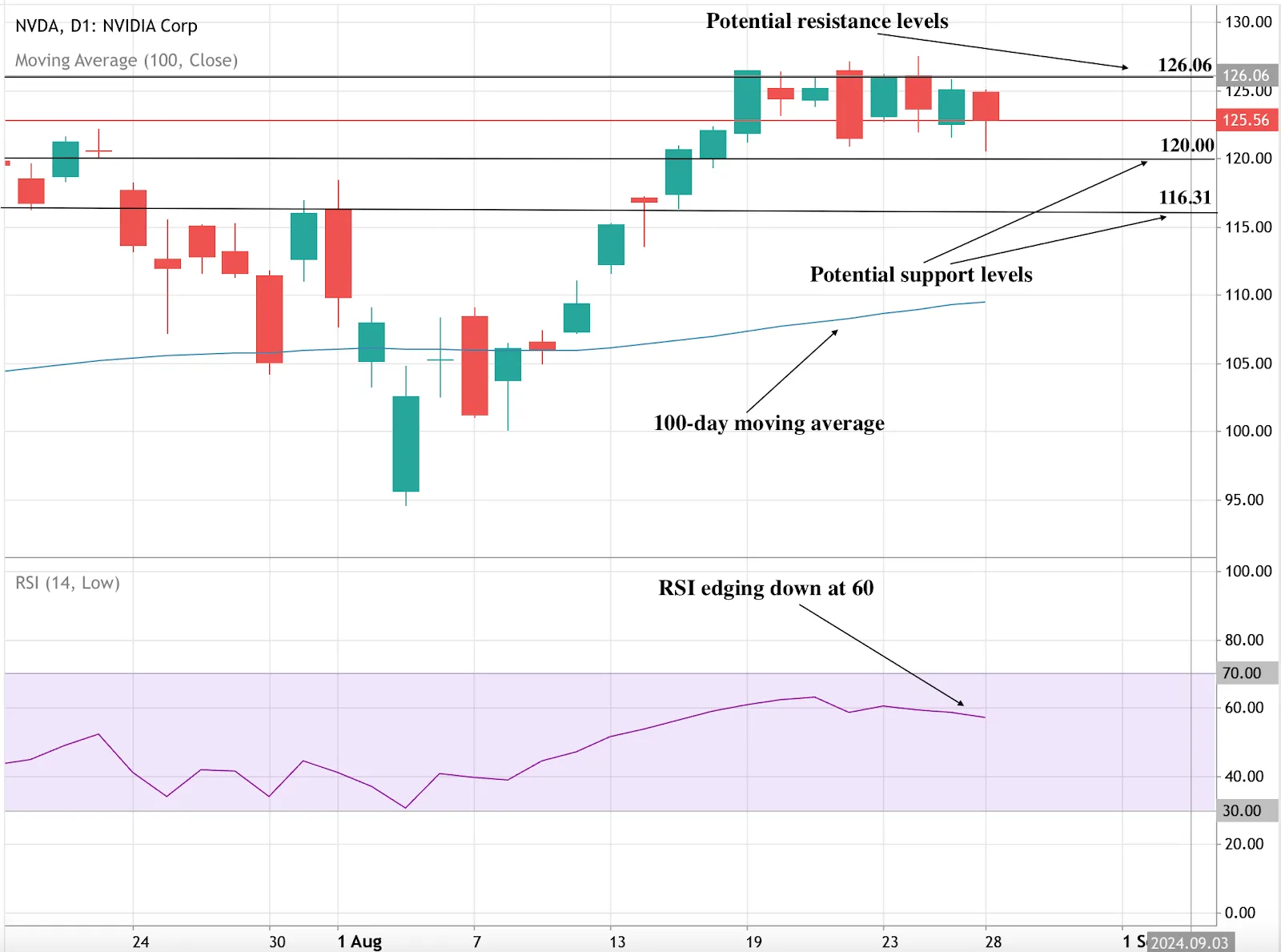Nvidia's shares stumble: A temporary setback or a sign of things to come?
.webp)
Nvidia's shares took a 6% hit after its recent earnings report, despite exceeding Wall Street's expectations. While the company posted strong numbers, the deceleration in year-on-year revenue growth, combined with uncertainties about the AI boom's longevity, has left investors concerned. Delays in the launch of Nvidia's much-anticipated Blackwell chips and increasing competition further add to the unease.

Nvidia's growth at risk?
Nvidia's current challenges raise questions about the sustainability of its growth trajectory. The company, although a dominant player in the AI chip market, faces a growing competitive landscape.
Rivals like AMD are making strategic moves to strengthen their position in the AI chip market, while new entrants like D-Matrix are introducing innovative alternatives to GPU-based chips, aiming to disrupt Nvidia's dominance with cost-effective solutions. Although Nvidia currently holds a commanding position in the market, the intensifying competition could gradually erode its market share and squeeze profit margins over time.
Nvidia's future looks bright
Despite the challenges, Nvidia still stands as a leader in the chip market and remains at the forefront of AI innovation, consistently delivering strong quarterly revenues. Nvidia's future prospects continue to look promising, suggesting that a significant stock bounce may be on the horizon.
Nvidia's data center business, the powerhouse behind its success, is experiencing robust growth, driven by the widespread adoption of AI across various industries. The company also expects strong demand for its upcoming Blackwell chip, which is anticipated to drive substantial revenue in the coming quarters.
Strategically, Nvidia is reinforcing its long-term growth potential through initiatives such as a substantial share buyback programme and a focus on optimising production efficiency. Additionally, the ongoing investments in AI infrastructure by major tech companies further bolster the sustained demand for Nvidia's cutting-edge GPUs.
CEO Jensen Huang remains optimistic about Nvidia's future, highlighting the diverse applications of its chips beyond AI chatbots. He envisions a broader role for GPUs in powering data centres, supporting everything from ad targeting and search engines to robotics and recommendation algorithms.
Innovation remains a cornerstone of Nvidia's strategy. The company has committed to an accelerated release schedule for its AI chip architecture, aiming for annual updates—a significant shift from its previous two-year cadence. This rapid pace of innovation, combined with the introduction of new software designed to deepen the integration of its chips into AI systems, positions Nvidia to maintain its technological edge and outpace the competition.
This move to a one-year release cycle could present a formidable challenge for rivals like AMD and Intel, who currently operate on a slower two-year cycle. While competitors have made strides in performance, Nvidia's accelerated innovation and comprehensive software ecosystem offer a significant competitive advantage.
What to watch as Nvidia stock prices slow down?
At the time of writing, Nvidia’s stock is trading around $125.56, having recently moved within a consolidating range. After opening lower, traders will be watching for signs of a rebound as the daily chart continues to show a bullish outlook, with prices remaining well above the 100-day moving average. However, the Relative Strength Index (RSI) is gently declining near 60, indicating a potential slowdown in upward momentum, possibly due to profit-taking.
If Nvidia’s stock manages to push higher, it may encounter resistance at the $126 level. A decisive move past this point could see the price climb towards $130 before facing another potential pause. Conversely, if the stock weakens further, the $120 level may provide some support. Should this level be breached, the next support zone to watch is around $116.31.

Disclaimer:
The information contained within this blog article is for educational purposes only and is not intended as financial or investment advice. This information is considered accurate and correct at the date of publication. No representation or warranty is given as to the accuracy or completeness of this information.
The performance figures quoted refer to the past, and past performance is not a guarantee of future performance or a reliable guide to future performance. Changes in circumstances after the time of publication may impact the accuracy of the information.
Trading is risky. We recommend you do your own research before making any trading decisions.



